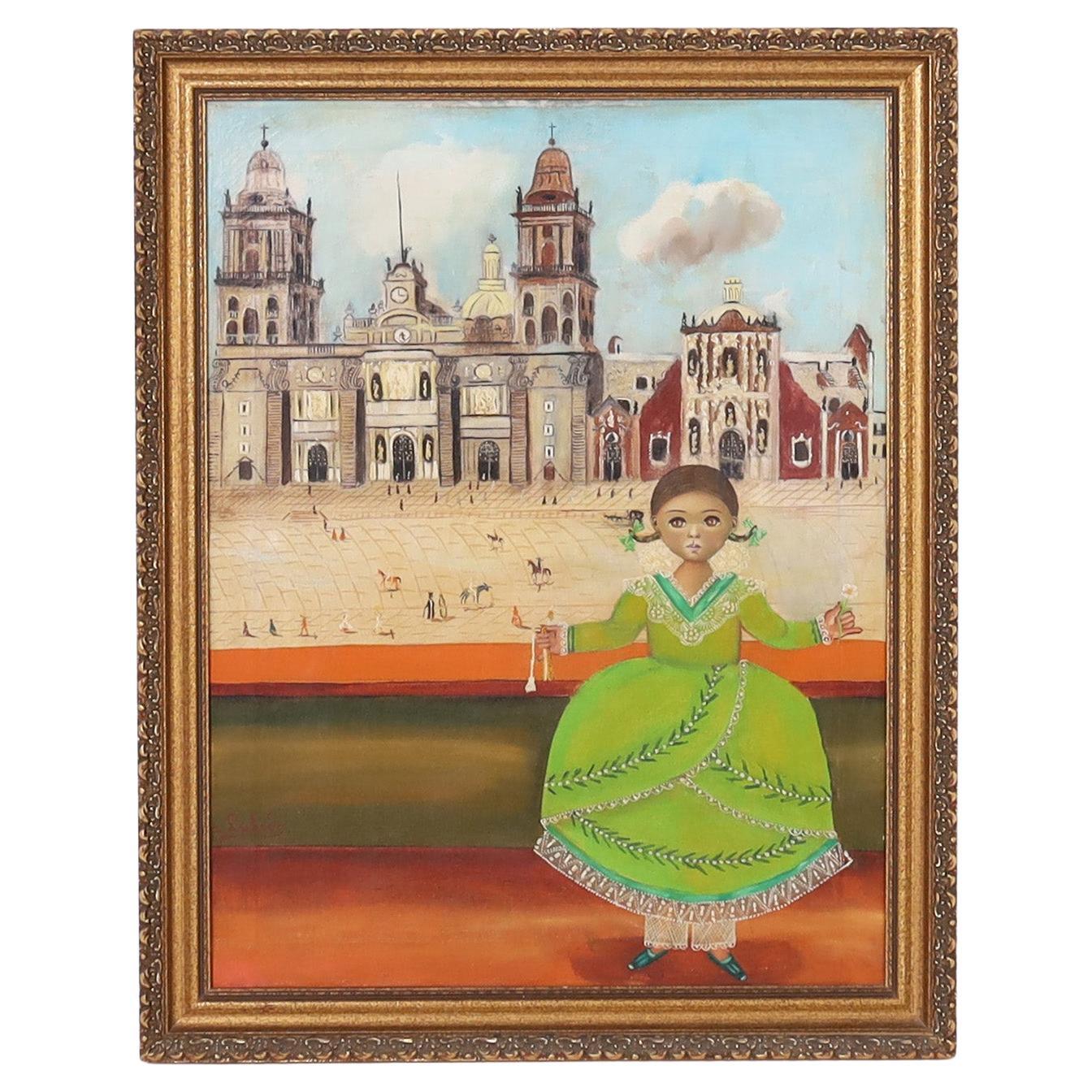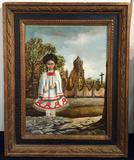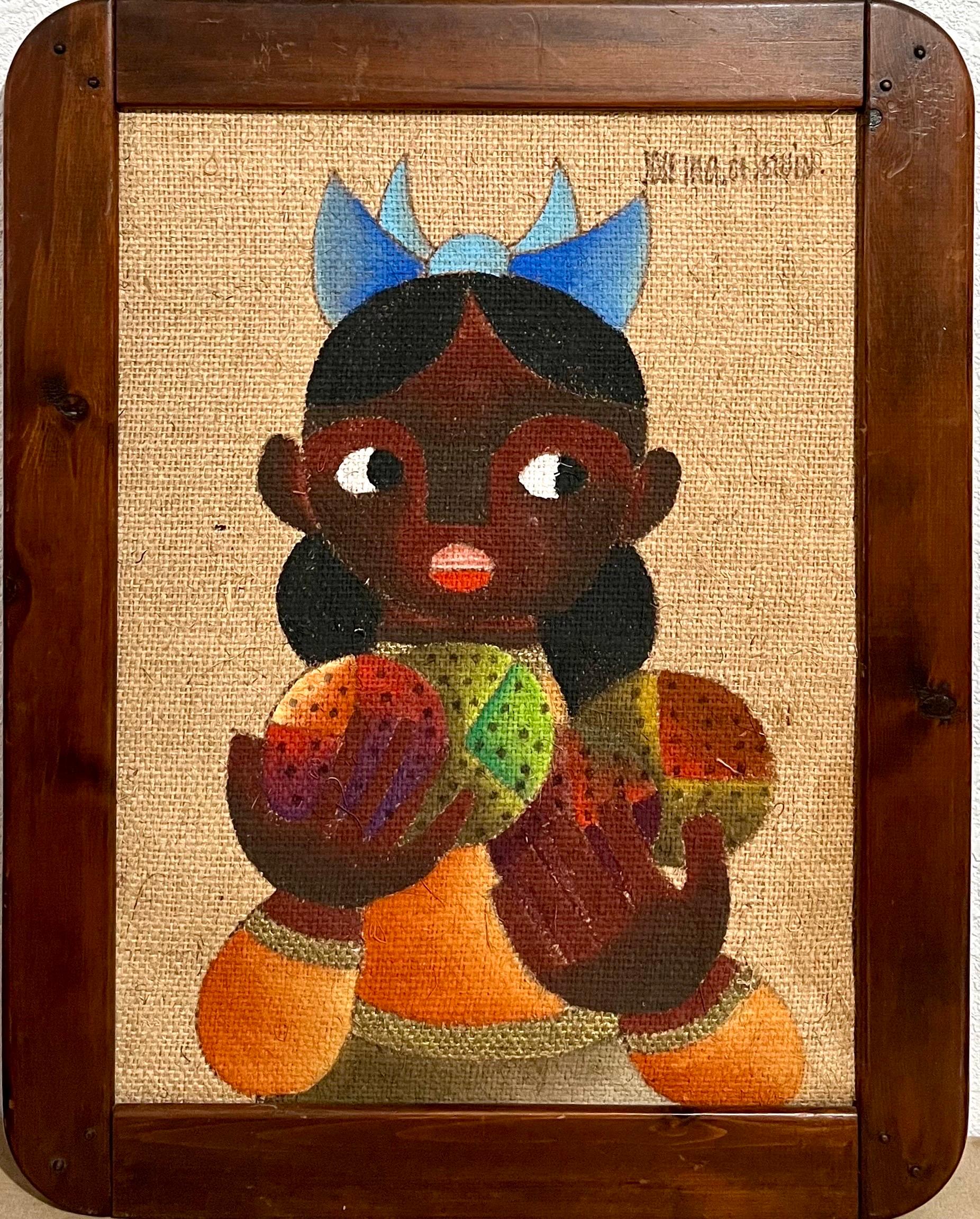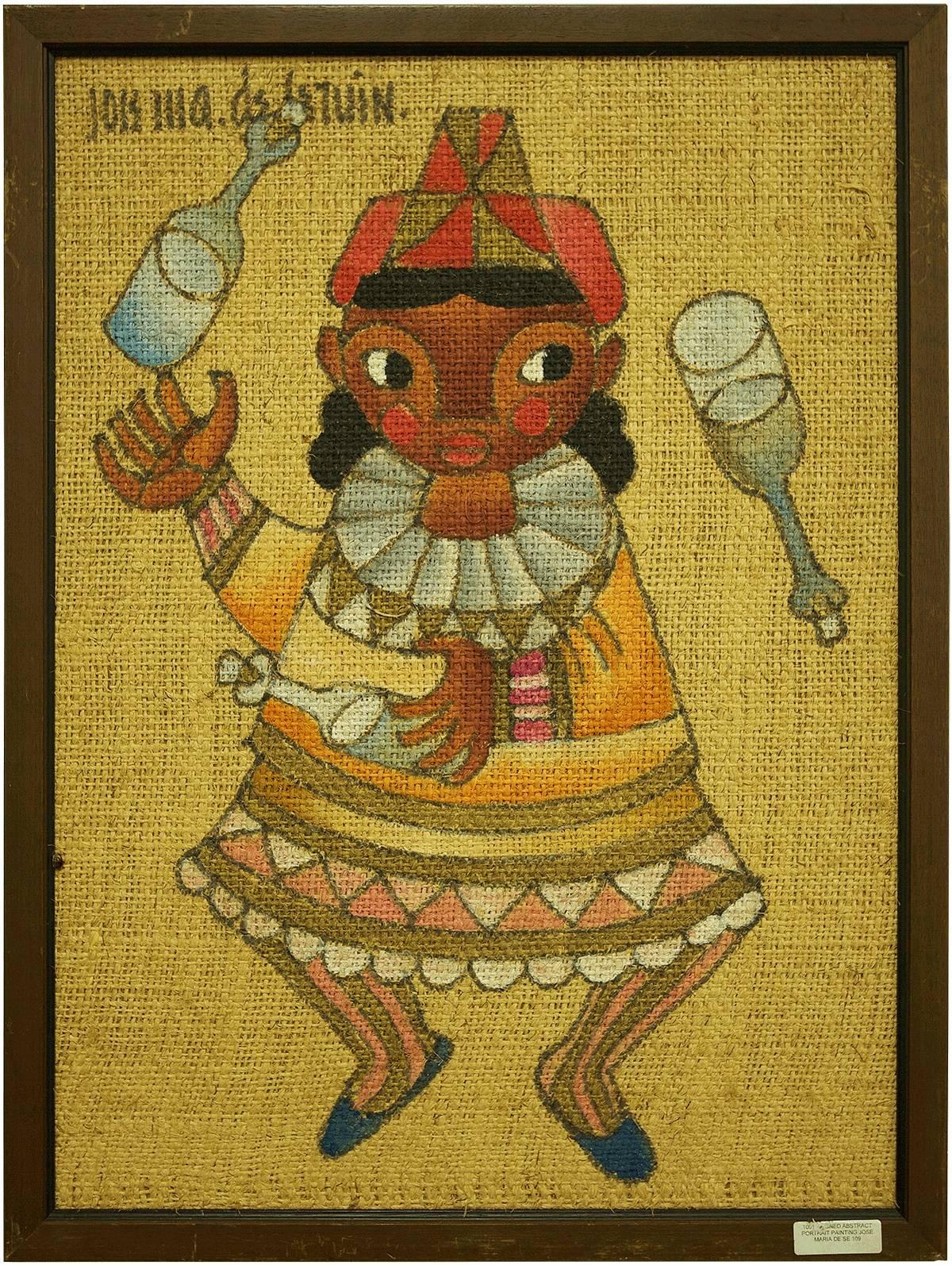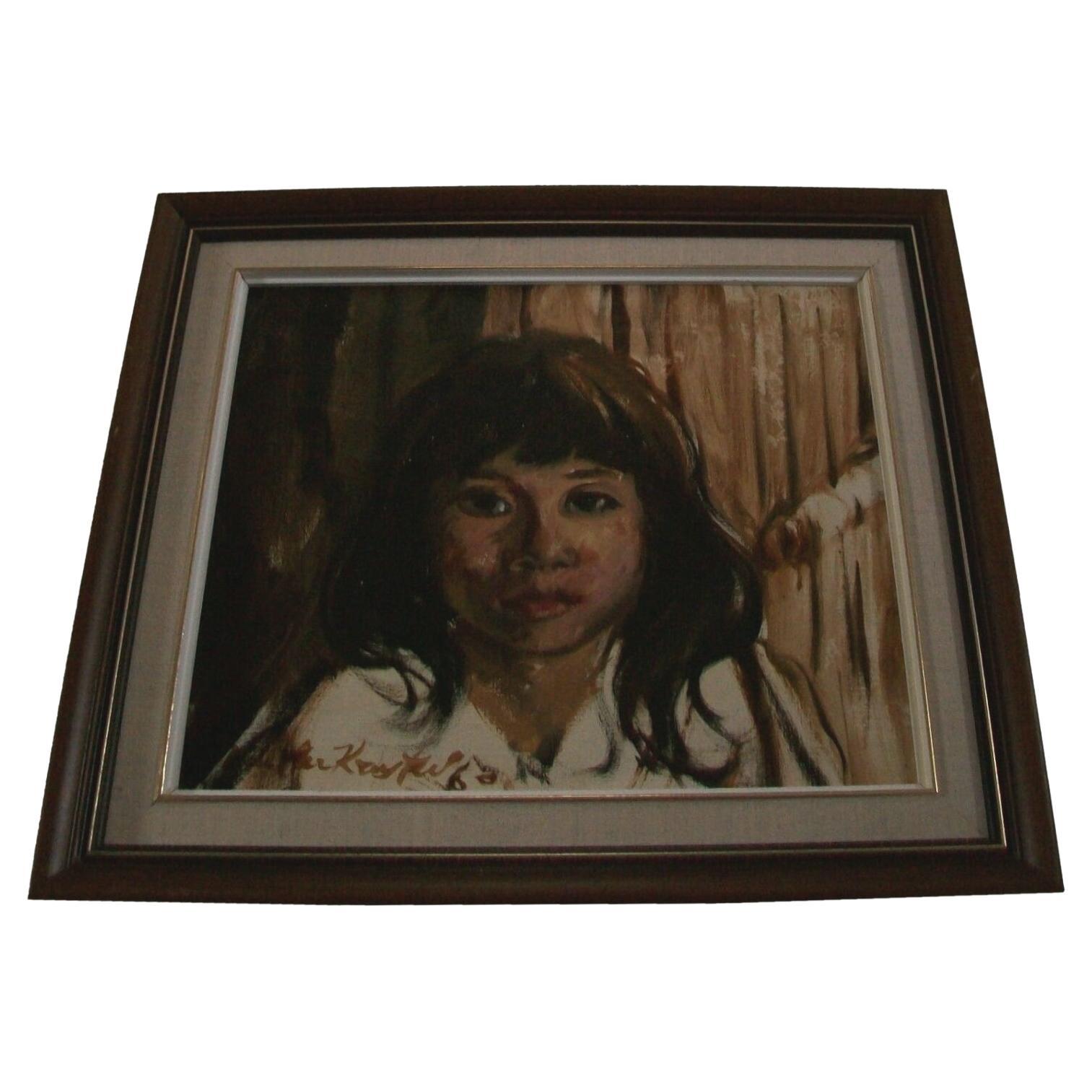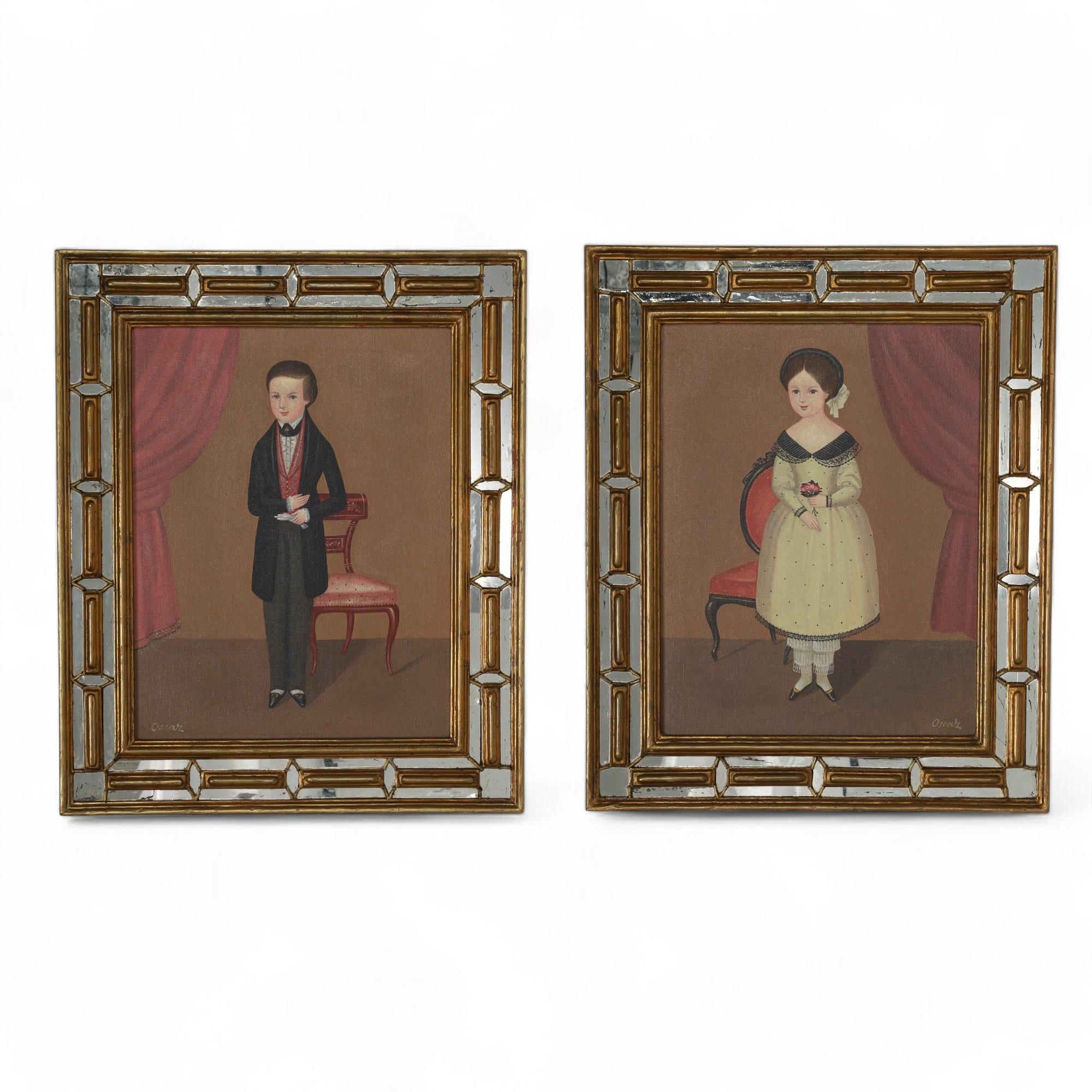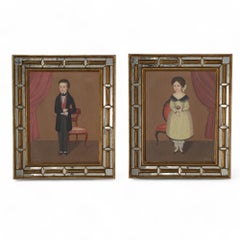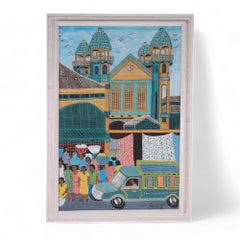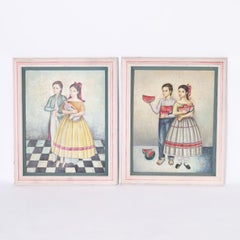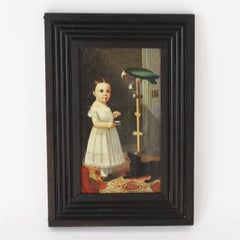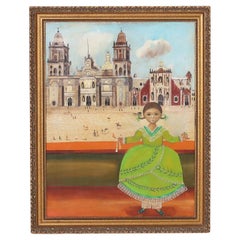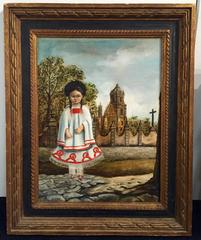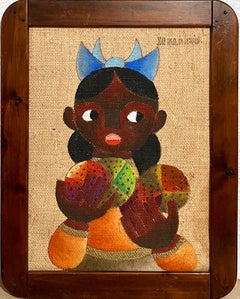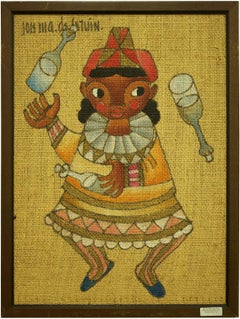Items Similar to Agapito Labios Mexican Folk Art Oil Painting on Canvas of a Girl
Want more images or videos?
Request additional images or videos from the seller
1 of 11
Agapito LabiosAgapito Labios Mexican Folk Art Oil Painting on Canvas of a GirlCirca 1950
Circa 1950
$3,900
£2,940.99
€3,401.39
CA$5,471.68
A$6,082.11
CHF 3,188.11
MX$74,277.30
NOK 39,801.74
SEK 37,446.02
DKK 25,387.01
About the Item
Enchanting oil painting on canvas of a girl in a ceremonial dress against an architectural background executed in a distinct naive folk art style. Signed Agapito Labios and presented in the original gilt wood frame.
- Creator:
- Creation Year:Circa 1950
- Dimensions:Height: 27 in (68.58 cm)Width: 21.5 in (54.61 cm)Depth: 1.5 in (3.81 cm)
- Medium:
- Movement & Style:
- Period:
- Condition:
- Gallery Location:Palm Beach, FL
- Reference Number:Seller: 71271stDibs: LU1659215227712
About the Seller
5.0
Vetted Professional Seller
Every seller passes strict standards for authenticity and reliability
1stDibs seller since 2021
28 sales on 1stDibs
Typical response time: <1 hour
- ShippingRetrieving quote...Shipping from: Palm Beach, FL
- Return Policy
Authenticity Guarantee
In the unlikely event there’s an issue with an item’s authenticity, contact us within 1 year for a full refund. DetailsMoney-Back Guarantee
If your item is not as described, is damaged in transit, or does not arrive, contact us within 7 days for a full refund. Details24-Hour Cancellation
You have a 24-hour grace period in which to reconsider your purchase, with no questions asked.Vetted Professional Sellers
Our world-class sellers must adhere to strict standards for service and quality, maintaining the integrity of our listings.Price-Match Guarantee
If you find that a seller listed the same item for a lower price elsewhere, we’ll match it.Trusted Global Delivery
Our best-in-class carrier network provides specialized shipping options worldwide, including custom delivery.More From This Seller
View AllPair of Vintage Mexican Folk Art Paintings of a Man and a Woman by Oscar Bernach
Located in Palm Beach, FL
Double take pair of vintage Mexican oil paintings on canvas of a man and a woman in interior settings executed in a distinctive naive style, signe...
Category
Mid-20th Century Folk Art Paintings
Materials
Canvas, Oil
Vintage Haitian Style Painting on Canvas by Leonel Castel
Located in Palm Beach, FL
Fanciful Mid Century Haitian style acrylic painting on canvas, executed in a distinctive naive technique depicting an eccentric composition with architecture, people and a bus titled...
Category
Late 20th Century Folk Art Paintings
Materials
Canvas, Acrylic
Pair of Paintings of Boy and Girl
Located in Palm Beach, FL
Charming pair of oil paintings on canvas of a boy and a girl, one with a doll and one with watermelon. Executed in a naive style once seen hard to forget. Signed Manuel Velazquez and...
Category
Mid-20th Century Folk Art Figurative Paintings
Materials
Oil
Antique Oil Painting on Canvas of a Child with a Bird and a Dog
Located in Palm Beach, FL
Charming small 19th Century oil painting on canvas of a girl in a dress in an interior scene with a parrot and a dog executed in a distinctive early American school of portraiture. R...
Category
Mid-19th Century Victorian Paintings
Materials
Oil
Jeanty J N Robert Vintage Haitian Painting on Board of a Village Scene
Located in Palm Beach, FL
Striking Haitian acrylic painting on board depicting a busy street scene executed in a distinctive naive style with bold colors and plenty of action. Signed J N Robert and presented ...
Category
Late 20th Century Folk Art Paintings
Materials
Paint, Acrylic
Folk Art Tropical Painting on Canvas
Located in Palm Beach, FL
Charming acrylic painting on canvas of a group of colorful figures in a tropical setting executed in a naive style. Signed Osnel in the lower right and presented in the original wood...
Category
20th Century Folk Art Figurative Paintings
Materials
Acrylic
You May Also Like
Agapito Labios Mexican Folk Art Oil Painting on Canvas of a Girl
By Agapito Labios
Located in Palm Beach, FL
Enchanting oil painting on canvas of a girl in a ceremonial dress against an architectural background executed in a distinct naive folk art style. Signed Agapito Labios and presented...
Category
Mid-20th Century Mexican Folk Art Paintings
Materials
Paint
"Sunday Dress" Mexican Painting by Agapito Lebios
By Agapito Labios
Located in Wiscasset, ME
Agapito Labios (Mexican, 1898-1996). Agapito Labios was born Agapito Engel Cifuentes in Pachuca, Hidalgo, Mexico in September of 1898. He took an active part in the Mexican Revolutio...
Category
Vintage 1950s American Paintings
Folk Art Mexican Girl Oil Painting on Burlap Charming Naive African American Art
By Jose Maria de Servin
Located in Surfside, FL
Framed 29 X 23
Image 18 X 24
The sweetness that characterizes the work of Mexican painter Jose Maria de Servin (1917-83) is a melancholy and placid one. While he worked in the most modern of styles, he adapted it to an anecdotal folk-art approach distinctly his own.
When he was an infant, de Servin's family moved with him to Guadalajara. A city of history and culture, Guadalajara had a thriving artistic community with strong connections to Europe. His brothers Antonio and Miguel became artists as well, and in later years they worked collaboratively. As a teenager, de Servin studied at one of Mexico's Schools of Open-Air Painting, free art-teaching institutions sponsored by the government.
Later de Servin became a pupil of the painter Chucho Reyes, known for his improvisational watercolor variations on traditional Mexican themes. This interest in imagery particular to Mexico would be of great significance to de Servin. De Servin also studied under the more traditional painter Jose Vizcarra. In the early 1930s de Servin joined the Pintores Jovenes de Jalisco, or Young Painters of Jalisco.
An influence of critical importance to de Servin was Pablo Picasso. One of the originators of Cubism, the Spanish painter soon departed from its quasi-scientific and optical basis to create lively and humorous geometrical abstractions. It was this Cubism, personal and decorative, that de Servin adopted. His earliest Cubist works mimic Picasso, while during the second stage of his career, his works become smooth and polished, with an emphasis on gentle surface textures.
After these cautious years, however, a rough boldness enters along with dominating colors of earth and sand. Modernists like de Servin were interested in exploring what they considered primitive artmaking styles. The adoption of a native manner and native themes is in keeping with Modernist tenets, as is the use of nontraditional materials. De Servin's portraits of peasants, large-eyed and simply rendered, recall children's drawings. The rough burlap ground contrasts with the playful imagery and delicate range of color. The figures, all children or child-like adults, are all curves and simple shapes arranged harmoniously. De Servin's cubism is free from grotesquerie as it celebrates the simplicity of its subjects.
De Servin worked with the social-realist Jose Orozco on several large mural commissions in Guadalajara, including one at the Legislative Palace. While their styles were dissimilar, both made use of Mexican imagery to glorify the common people. A sought-after muralist in his own right, de Servin brought the rich colors and endearing characters of his panels to his larger-scale work.
For 15 years, de Servin taught summer art classes at the University of Arizona. His career was marked by many one-man shows, both in North America and Europe. In recent years, his striking style has attracted increased notice from critics and the public.
His style is a unique conglomerate of tradition, history, legends, heroes, old customs and folklore. It is a self-standing style, recognizable, cheerful, whimsical and a happy creation. Naïve art is any form of visual art that is created by a person who lacks the formal education and training that a professional artist undergoes (in anatomy, art history, technique, perspective, ways of seeing). Unlike folk art, naïve art does not necessarily evince a distinct cultural context or tradition. Naïve art is recognized, and often imitated, for its childlike simplicity and frankness. Paintings of this kind typically have a flat rendering style with a rudimentary expression of perspective.
One particularly influential painter of "naïve art" was Henri Rousseau (1844–1910), a French Post-Impressionist who was discovered by Pablo Picasso. Naïve art is often seen as outsider art that is by someone without formal (or little) training or degree. While this was true before the twentieth century, there are now academies for naïve art. Naïve art is now a fully recognized art genre, represented in art galleries worldwide.
Museums devoted to naïve art now exist in Kecskemét, Hungary; Riga, Latvia; Jaen, Spain; Rio de Janeiro, Brasil; Vicq France and Paris. "Primitive art" is another term often applied to art by those without formal training, but is historically more often applied to work from certain cultures that have been judged socially or technologically "primitive" by Western academia, such as Native American, sub saharan African or Pacific Island art (see Tribal art). This is distinguished from the self-conscious, "primitive" inspired movement primitivism. Another term related to (but not completely synonymous with) naïve art is folk art. There also exist the terms "naïvism" and "primitivism" which are usually applied to professional painters working in the style of naïve art (like Paul Gauguin, Mikhail Larionov, Paul Klee).
At all events, naive art can be regarded as having occupied an "official" position in the annals of twentieth-century art since - at the very latest - the publication of the Der Blaue Reiter, an almanac in 1912. Wassily Kandinsky and Franz Marc, who brought out the almanac, presented 6 reproductions of paintings by le Douanier' Rousseau (Henri Rousseau), comparing them with other pictorial examples. However, most experts agree that the year that naive art was "discovered" was 1885, when the painter Paul Signac became aware of the talents of Henri Rousseau and set about organizing exhibitions of his work in a number of prestigious galleries. The Earth Group (Grupa Zemlja) were Croatian artists, architects and intellectuals active in Zagreb from 1929 to 1935. The group included the painters Krsto Hegedušić, Edo Kovačević, Omer Mujadžić, Kamilo Ružička, Ivan Tabaković, and Oton Postružnik, the sculptors Antun Augustinčić, Frano Kršinić, and the architect Drago Ibler. A term applied to Yugoslav (Croatian) naive painters working in or around the village of Hlebine, near the Hungarian border, from about 1930. Some of the best known naive artists are Dragan Gaži, Ivan Generalić, Josip Generalić, Krsto Hegedušić, Mijo Kovačić, Ivan Lacković-Croata, Franjo Mraz, Ivan Večenaj and Mirko Virius. Camille Bombois (1883–1970) Ferdinand Cheval, known as 'le facteur Cheval' (1836–1924) Henry Darger (1892–1973) L. S. Lowry (1887–1976) Grandma Moses, Anna Mary Robertson (1860–1961) Nikifor (1895–1968) Poland, Horace Pippin (1888–1946) Jon Serl (1894-1993) United States Alfred Wallis (1855–1942) Scottie Wilson (1890–1972) Gesner Abelard...
Category
Mid-20th Century Folk Art Figurative Paintings
Materials
Burlap, Oil
Folk Art Mexican Girl, Circus Clown Juggler
By Jose Maria de Servin
Located in Surfside, FL
The sweetness that characterizes the work of Mexican painter Jose Maria de Servin (1917-83) is a melancholy and placid one. While he worked in the most modern of styles, he adapted i...
Category
Mid-20th Century Folk Art Figurative Paintings
Materials
Burlap, Oil
Kay Yum, Untitled Portrait Painting on Canvas, Framed, Mexico, circa 1960
Located in Chatham, ON
KAY YUM - Untitled (Portrait of a Mexican Girl) - Mid Century Latin American oil painting on canvas - contained in a vintage frame with linen line...
Category
Mid-20th Century Mexican Spanish Colonial Paintings
Materials
Canvas, Softwood, Paint
$437 Sale Price
30% Off
Original Vintage Signed Folk Art Portrait Painting on Wood Panel
Located in Vero Beach, FL
Original Vintage Signed Folk Art Portrait Painting on Wood Panel
Charming half-length primitive portrait painting of a young girl on a wood panel. She is wearing a blue dress and ho...
Category
Mid-20th Century American Folk Art Paintings
Materials
Wood
More Ways To Browse
Mexico Mid Century Art
Paintings Of Vintage Dresses
Mexican Mid Century Painting
Girl Dress Painting
Naive Folk Art
Mexican Girl
Mexican Folk Art Painting
Girl Folk Art
Mexican Folk Art Wood
Mexican Girl Painting
Saint Oil Painting
1972 Oil
Pastel Still Life
Swiss Oil Paintings
Dutch Landscape Paintings
Classical Century Oil Painting
Contemporary Impressionism
Russian School Of Painting
